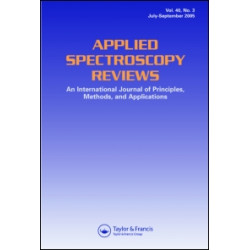
2017 CiteScore 0.88- values from Scopus
Innovation in Language Learning and Teaching is an international refereed journal devoted to research into all aspects of innovation in language learning and teaching. It publishes research articles, review articles and book/materials reviews. It draws on a range of disciplines that share a focus on exploring new approaches to language learning and teaching from a learner-centred perspective.
Changes in learners’ work, life, and study patterns and the use of new technologies for learning strongly impact on every aspect of language learning and teaching, from how we perceive the roles of teachers and learners, to how we adapt to new roles, from the materials and methods we develop to support learners in more flexible ways, to the research methodologies we use to investigate these ways. The impact of globalisation, increased international mobility, and a need for more flexible ways of learning make a critical reflection on the changing needs of the learner necessary. The journal offers a forum for this kind of reflection and encourages researchers to explore the theoretical underpinnings of new pedagogies which focus on the development of and support for innovation in language learning.
• To publish research into the theoretical and methodological bases of learner centred approaches in language education;
• To explore pedagogies with a learner-centred focus;
• To encourage dissemination and cross-fertilisation of policies and practice relating to innovation in pedagogies for language learning in different learning contexts.
The scope of the journal is intentionally broad, as it is intended to offer an interdisciplinary platform for all those interested in innovative pedagogies and methodologies. Articles may draw on fields as diverse as educational psychology, artificial intelligence, neurolinguistics, human-machine interaction, educational technologies, philosophy and second language acquisition, and may investigate and further develop areas such as:
Collaborative learning
Constructivist approaches to language learning
Distance learning
E-learning
Flexible learning
Language Awareness
Learner Autonomy
Motivation and language learning
Self-access language learning
as well as a number of related areas, such as:
language learning curriculum development
learner advising/counselling
learner biographies
learner training
learning strategies
learning styles
metacognition
policy and its role in pedagogical and methodological change
resources for language learning
self- and peer assessment
tandem learning
teacher autonomy
technology and language learning
The concept of innovation will be broadly interpreted, and may be related to innovation in practice, innovation in policy, innovation in research methodologies, or any other form of innovation. The key elements of the articles, however, are as follows:
• They should report on research, whether it relates to pedagogy, policy, theoretical concepts or other relevant fields;
• They should also be explicit about the way in which the article constitutes innovation.
Innovative Practice
Innovation in Language Learning and Teaching also includes an 'Innovative Practice' section, giving authors an opportunity to showcase the latest in innovative practice in language learning and teaching. Papers need to be of a similarly high standard to papers in the main section of the journal and will be subject to review. Papers in this section, which will include a maximum of one paper per journal issue, do not need to report on research, but do need to provide a theoretical background.
Innovative Practice (IP) papers are usually shorter (between 3500-4500 words, though they can be up to 5500), practice-oriented papers that primarily focus on describing the implementation process of an innovation, rather than focusing on research. Readers are interested in learning how an innovation emerged, how it was (attempted to be) put into practice, whether this worked, and why, or how it could be done differently in the future. In other words, IP papers are more about the PROCESS than the PRODUCT and more about PRACTICE than THEORY.
Although there is some flexibility, all papers are expected to address the following points (preferably using specific headings):
• What is the innovation?
This should be stated in the abstract and elaborated on at the start of the article. What is the idea that is new to the specific context you are reporting on?
• Why is the innovation needed?
In other words, what problem is it trying to solve or what opportunity is it trying to capitalise on?
• What made you think the innovation might work?
You may refer to existing literature here but with a focus on previous studies that have investigated implementation rather than theory. You may also refer to practitioners' experiences and other sources (e.g. blogs, conferences, user reviews) that one would perhaps not normally find in a 'literature review' section of a journal paper.
• How did you implement it?
This is the main (and longest) section of your paper. How did you put it into practice? Consider the entire process from initial stakeholder engagement (who did you speak with to get permission/money/resources, how did you introduce the idea to colleagues, administrators etc?), to learner and/or teacher training, to technical considerations, to eventual classroom practice.
• How did it go?
What problems did you encounter? How did you solve these along the way? This section may include an evaluation, observations or even summaries of more formal research data. Here we are mostly concerned with evaluation of the implementation process. What worked and what didn't?
• What recommendations do you have?
What would you have done differently? What lessons have you learned and what advice would you give to other practitioners, not just about your innovation but perhaps also about the process of innovating?
IP papers ARE:
• Contextual: the innovation needs to be situated in a particular context with sufficient information to enable the reader to understand why the innovation was implemented in the way it was, and why it therefore worked or did not work.
• Implemented: you are reporting on an actual project, not a potential idea or theory.
• To the point: only include what is needed to understand your innovation. Reduce background, literature review, research instruments and so on and focus instead on your experiences. The paper may include artefacts, examples of materials, teaching resources etc. If needed they can be hosted and referenced in the article.
IP papers ARE NOT:
• Research papers: the purpose is to describe practice.
• Only about high-tech or expensive products: an innovative use of a pencil is of as much interest to us as the use of an MRI scanner for language teaching.
• Only about developments in rich countries: we want to hear about what works 'on the ground' around the world. What works in one place may not work in another or may need adapting.
• Lengthy descriptions of the innovation: for example, if you have developed a new app, we want to know briefly what it does and how it works, but we do not need detailed descriptions or technical information. We just need to know enough to be able to understand why you developed it and, most importantly, how you implemented it.
Here are a couple of papers we think offer good models of what we are looking for in Innovative Practice papers:
Tinker Sachs and Ho (2011)
Banegas (2013)
Peer Review Policy

















